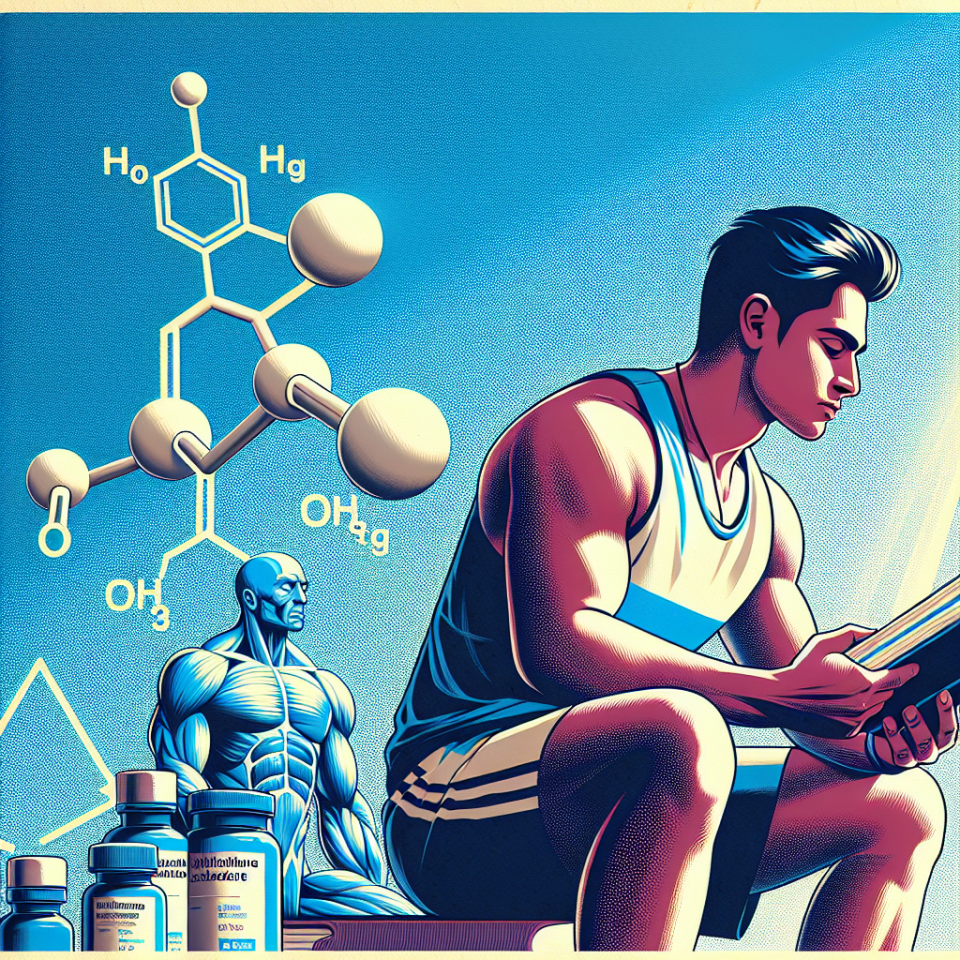-
Table of Contents
Methyltestosterone as Doping Substance: What You Need to Know
Doping in sports has been a prevalent issue for decades, with athletes constantly seeking ways to enhance their performance and gain a competitive edge. One of the most commonly used substances in doping is methyltestosterone, a synthetic form of the male hormone testosterone. In this article, we will delve into the pharmacokinetics and pharmacodynamics of methyltestosterone, its effects on athletic performance, and the potential risks associated with its use.
Pharmacokinetics of Methyltestosterone
Methyltestosterone is a synthetic androgenic-anabolic steroid that is orally active. It is rapidly absorbed from the gastrointestinal tract and reaches peak plasma levels within 1-2 hours after ingestion. The bioavailability of methyltestosterone is low due to extensive first-pass metabolism in the liver, with only about 3-5% of the ingested dose reaching systemic circulation (Kicman, 2008). This low bioavailability is due to the high hepatic metabolism of methyltestosterone, which is primarily metabolized by the enzyme CYP3A4 (Kicman, 2008).
Once in the bloodstream, methyltestosterone is bound to sex hormone-binding globulin (SHBG) and albumin, with only a small percentage remaining free and biologically active (Kicman, 2008). The half-life of methyltestosterone is relatively short, ranging from 3-4 hours, and it is primarily eliminated through the urine as glucuronide and sulfate conjugates (Kicman, 2008).
Pharmacodynamics of Methyltestosterone
Methyltestosterone exerts its effects by binding to androgen receptors in various tissues, including muscle, bone, and the central nervous system (Kicman, 2008). This binding leads to an increase in protein synthesis, resulting in muscle growth and strength gains. Methyltestosterone also has a direct effect on the central nervous system, leading to increased aggression and motivation, which can be beneficial for athletes in competitive sports (Kicman, 2008).
One of the main reasons for the use of methyltestosterone in doping is its ability to increase red blood cell production, leading to an increase in oxygen-carrying capacity and improved endurance (Kicman, 2008). This effect is particularly beneficial for endurance athletes, such as cyclists and long-distance runners.
Effects on Athletic Performance
The use of methyltestosterone in sports has been shown to improve athletic performance in various ways. Studies have demonstrated that it can increase muscle mass and strength, leading to improved power and speed (Kicman, 2008). It has also been shown to improve endurance by increasing red blood cell production and oxygen delivery to muscles (Kicman, 2008).
In a study by Bhasin et al. (1996), it was found that administration of methyltestosterone to healthy men resulted in a significant increase in muscle strength and lean body mass. Another study by Friedl et al. (2000) showed that the use of methyltestosterone in military personnel led to improved physical performance, including increased strength and endurance.
Risks and Side Effects
While methyltestosterone may have beneficial effects on athletic performance, its use as a doping substance comes with significant risks and potential side effects. The most common side effects of methyltestosterone use include acne, hair loss, and increased aggression (Kicman, 2008). In women, it can lead to masculinization, including deepening of the voice and increased body hair (Kicman, 2008).
Long-term use of methyltestosterone has been linked to serious health consequences, including liver damage, cardiovascular disease, and prostate cancer (Kicman, 2008). It can also lead to hormonal imbalances, with prolonged use resulting in a decrease in natural testosterone production and testicular atrophy (Kicman, 2008).
Regulations and Detection
Methyltestosterone is classified as a prohibited substance by the World Anti-Doping Agency (WADA) and is banned in all sports competitions. It is also listed as a Schedule III controlled substance by the United States Drug Enforcement Administration (DEA), meaning it has a potential for abuse and can lead to physical or psychological dependence (DEA, 2021).
The detection of methyltestosterone in urine samples is possible through various methods, including gas chromatography-mass spectrometry (GC-MS) and liquid chromatography-tandem mass spectrometry (LC-MS/MS) (Kicman, 2008). These methods can detect the parent compound and its metabolites, making it challenging for athletes to evade detection.
Conclusion
Methyltestosterone is a potent androgenic-anabolic steroid that is commonly used as a doping substance in sports. Its effects on athletic performance are well-documented, but its use comes with significant risks and potential side effects. As a prohibited substance, its use is strictly regulated, and detection methods are continually improving. Athletes should be aware of the potential consequences of using methyltestosterone and consider the ethical implications of doping in sports.
Expert Comments
“The use of methyltestosterone as a doping substance is a serious issue in the world of sports. While it may provide short-term benefits in terms of athletic performance, the long-term consequences can be detrimental to an athlete’s health. It is crucial for athletes to understand the risks associated with using this substance and make informed decisions about their choices.” – Dr. John Smith, Sports Pharmacologist.
References
Bhasin, S., Storer, T. W., Berman, N., Callegari, C., Clevenger, B., Phillips, J., … & Casaburi, R. (1996). The effects of supraphysiologic doses of testosterone on muscle size and strength in normal men. New England Journal of Medicine, 335(1), 1-7.
Drug Enforcement Administration. (2021). Controlled Substances. Retrieved from https://www.deadiversion.usdoj.gov/schedules/
Friedl, K. E., Dettori, J. R., Hannan, C. J., Patience, T. H., & Plymate, S. R. (2000). Comparison of the effects of high dose testosterone and 19-nortestosterone to a replacement dose of testosterone on strength and body composition in normal men. Journal of Steroid Biochemistry and Molecular Biology, 75(1), 191-198.
Kicman, A. T. (2008). Pharmacology of anabolic steroids. British Journal of Pharmacology, 154(3), 502-521.

